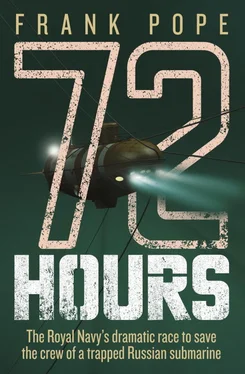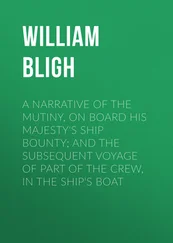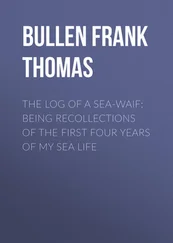All of them were now slipping in and out of consciousness. Sleep was welcome when it came for it brought relief from the sodden grip of the cold, but muffled alarms rang in their minds. Their fuzzy thoughts could hardly remember the warnings about the seductive lure of slipping into the deadly, silken arms of carbon dioxide. All they knew is that it was better than the choking, carbon monoxide-laced smoke that would accompany fire in the compartments.
It was not just the crew of the Kursk that had suffered this agony. Back in 1989, the Komsomolets – an experimental submarine with a titanium hull strong enough to take her to a depth of 1,500 metres – was hit by an electrical fire after a short circuit in the aft compartment. The submarine surfaced during the battle to contain the blaze, and its reactor scrammed and shut down. Fifty-nine men managed to abandon ship, but many of these drowned because there were too few lifeboats to take them all. The Commanding Officer and four others were still on board when the submarine slipped back beneath the surface and began plummeting to the seabed 1,680 metres below. The five men climbed inside an escape pod mounted in the fin and ejected, but the pod had already filled with toxic gases from the fire, and all but one died inside.
Gasping for air – but thankfully not choking on it – Milachevesky raised the spanner and slowly tapped three times against the hull, signalling that they’d received the message that the robot was leaving them. Although they were still receiving communications on the underwater telephone, they’d stopped using it for replies. Transmitting used too much power, and they had little to report that couldn’t be answered with a yes or a no. Hammering on the hull was exhausting, but it was better than draining the batteries.
Before the last clang had finished reverberating through the hull, the comforting murmur of the foreign robot had already begun to recede. The sailors were left in silence again, more conscious than ever of the clock that was ticking, entirely beyond their control.
Sunday, 7 August
SS + 69 h 30 mins
02.00 UK – 05.00 Moscow – 14.00 Kamchatka
Petropavlovsk-Kamchatsky
Guzel Latypova was exhausted. She’d been up all night following the arrival of the international rescue teams, standing in the rain with her camera crew waiting for the aircraft to unload, then again down on the docks as the Americans were methodically loading their gear. Now everything had gone quiet, but it wasn’t an easy calm. The key drama of this whole story was being played out, but she wasn’t there to witness it. Despite all her efforts, only a television crew from the federal TV news agency had been allowed to join the fleet at the accident site.
She couldn’t sit still, so she decided to go over to see Yelena Milachevskaya again. The pilot’s wife was getting regular updates on the situation from headquarters over the phone. It was such a good information conduit that Latypova had been using it to inform her half-hourly updates to Interfax and her own newsroom at STS-Kamchatka.
Latypova found Yelena sitting in a chair, her hand resting on the telephone receiver. She was drowsy from her drugged sleep, but Latypova could still feel the panic that gripped the woman. The phone had been silent for too long, Yelena fretted. Something had happened that they didn’t want to tell her. Already she could feel Slava was close to the end, she said. The journalist put a hand on her shoulder and tried to calm her. They’re probably just busy, she said. After all, there was no reason to think anything had gone wrong.
Sunday, 7 August
SS + 69 h 35 mins
02.05 UK – 05.05 Moscow – 14.05 Kamchatka
KIL-27 , Berezovya Bay
Gold stood on deck, patiently waiting to usher Scorpio back on to the ship. Nuttall had retreated the robot a safe distance from the array then brought it back to the surface, and now was relying on Gold to guide him back in towards the lifting point.
Charlie Sillet was getting himself prepared on the crane, ensuring the boom was perfectly positioned with the catcher unit ready to be lowered. Will Forrester, the umbilical drum operator, was gradually taking in the slack on the winch. He didn’t want it snagging, but he didn’t want to drag the vehicle by its tail either. Damage to the umbilical was the last thing they needed right now. Problems in the 900-metre cable were tough to find at the best of times and even tougher to fix, especially in a hurry.
Nigel Pine had disappeared into the workshop, housed in the other half of the control cabin container, on a hunt for some aluminium plate that could be used to replace the bent cutter guide. He and Alan Hislop had soon set out the tools and materials and cleared a workspace, and now stood out of the way. They all waited like mechanics in a Formula One pitstop. Each of the six engineers would tackle a different task: Pine and Forrester would take the bent cutter guide, Sillet and Hislop would be on the oil problem, and Nuttall would give the vehicle a quick once over looking for other potential problems. Gold would be there, overseeing as the pit boss, while Dave Burke stood by ready to help if anything else came up.
Watching Scorpio close in on the ship to the accompaniment of the umbilical winch’s groan, Gold prayed that there were no unpleasant surprises waiting for him. He guided the robot in beneath the catcher unit, which engaged with a clunk, and Sillet began to lift it clear of the water.
Nuttall cut the power and scrambled out of the control cabin. The Alsatian appeared in front of him, jolting his mind back to the fact that he was on a Russian vessel above a top-secret military installation. He could feel the eyes of the foreign crew on him as he strode over to Scorpio, adding to the pressure.
Sillet lifted Scorpio across to the workspace, and as it swung over the deck six pairs of arms reached out to steady it. Gold was already peering inside at the oil termination box, while the others were shooting glances at the cutter guide, confirming their tasks.
When Scorpio finally hit the rope padded deck, all six engineers sprang into action. Pine began unbolting the bent cutter guide. Replacing it was the only option – bending it back would weaken the aluminium, increasing the risk of it deforming a second time. He’d already cut the replacement plate to size; all that remained was to use the bent one as a template to drill the mounting holes, and it could be refitted.
Sillet released the pressure seal cap of the oil reserve. It was almost at the bottom. He and Hislop began carefully tracing back down the lines, looking for telltale traces of oil. When he got to the main termination box he ran a finger around the edge, his finger tip expertly gauging the gap and feeling for any bulging of the rubber O-ring that sealed it.
Nuttall was checking the thrusters. Although it was probably the low voltage and the motion of the ship causing the bad handling he’d been experiencing, he wanted to rule out any other causes. When he got to the port lateral thruster, he did what he’d done to all the others and took the blades in his palm and tried to spin the propeller, checking for the usual resistance in the hydraulic system. There was none – it span freely. The shear pin had gone. It was that simple. He could pull the propeller straight off. That was lucky, he thought. They could easily have lost it, or, worse, it could have jammed in place. He jogged back to the workshop and fished out a new shear pin. Five minutes later he had slid it into position and crimped it, binding the propeller to its shaft once more. He checked all the thrusters again, and confirmed that propulsion was good to go.
Читать дальше












